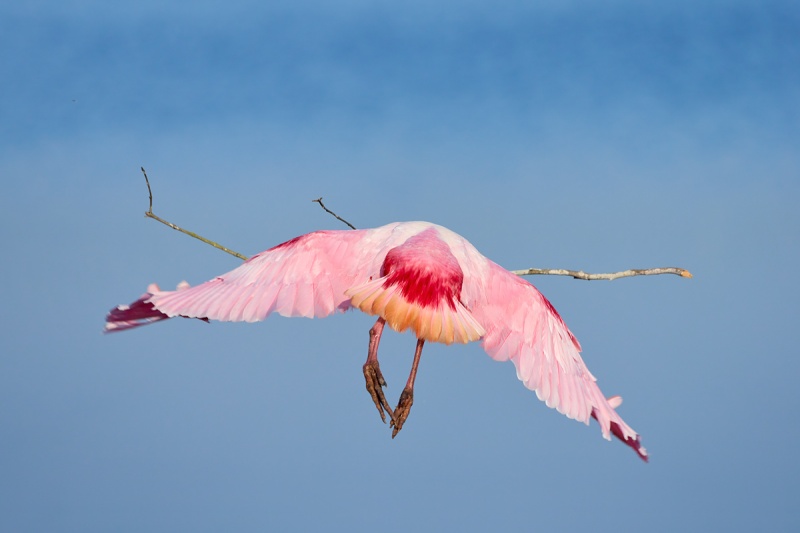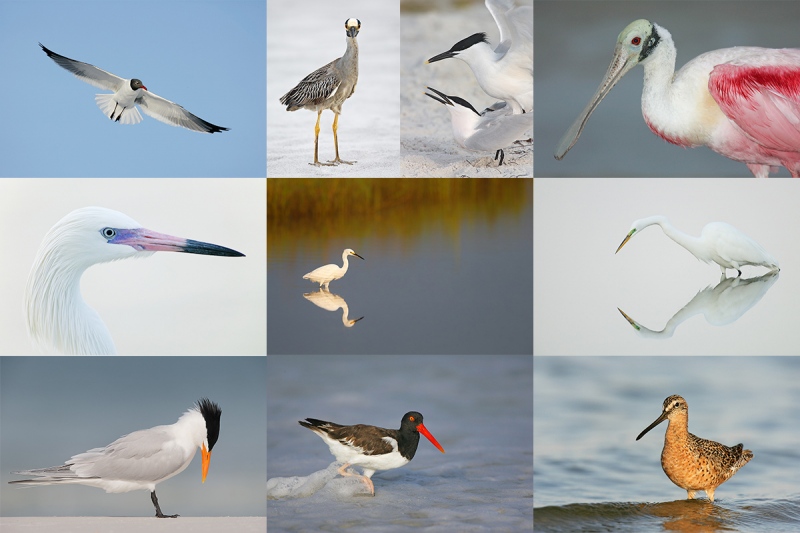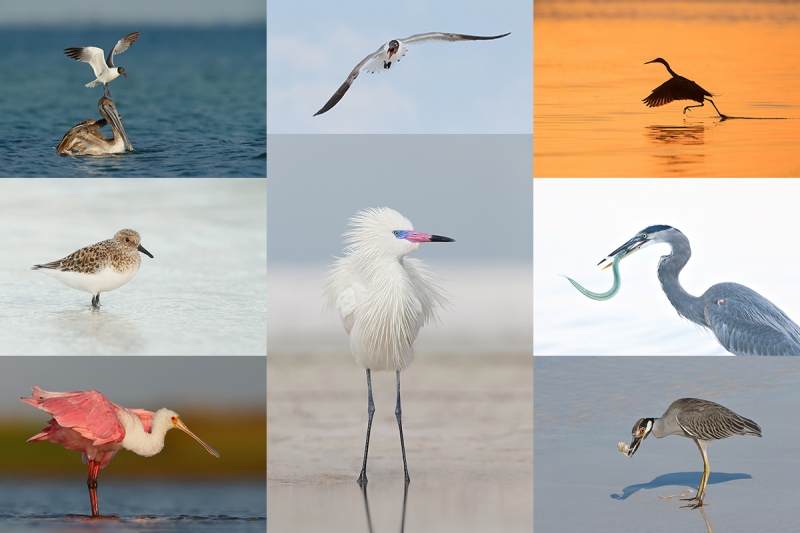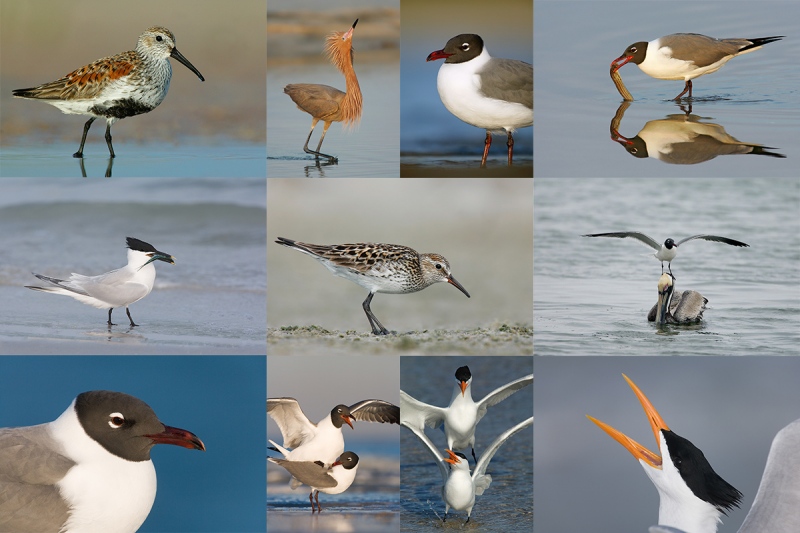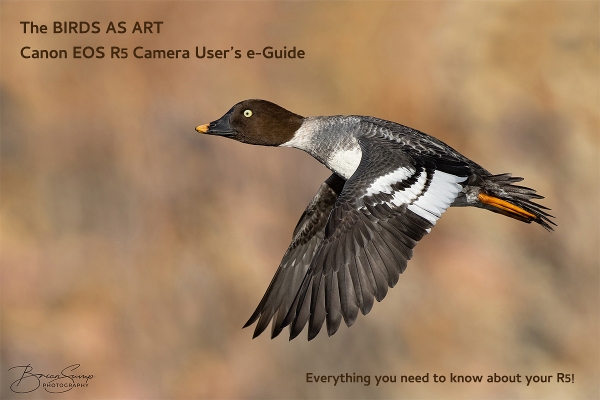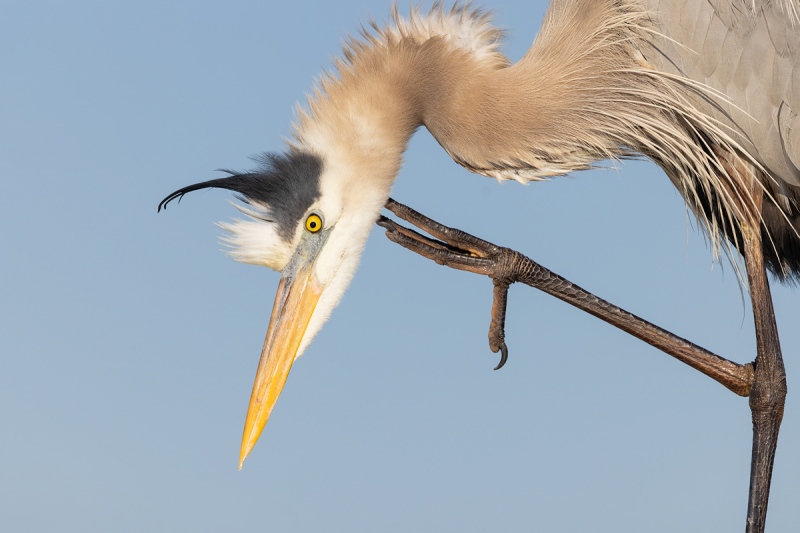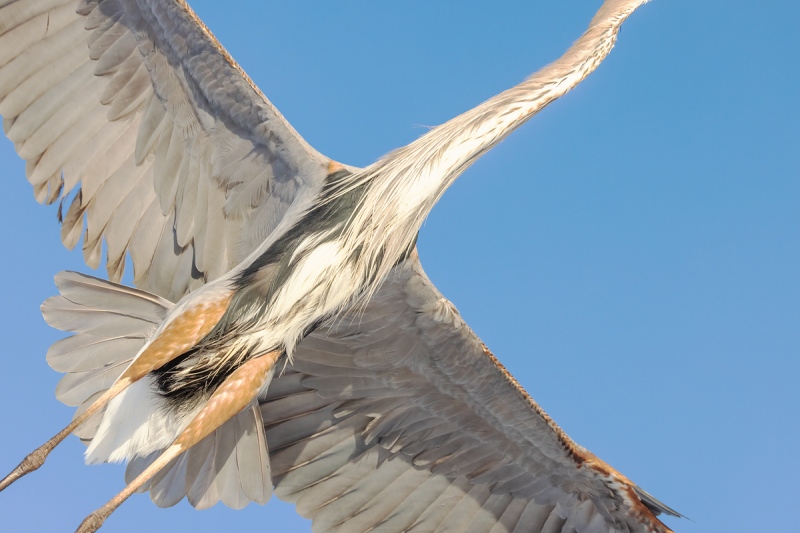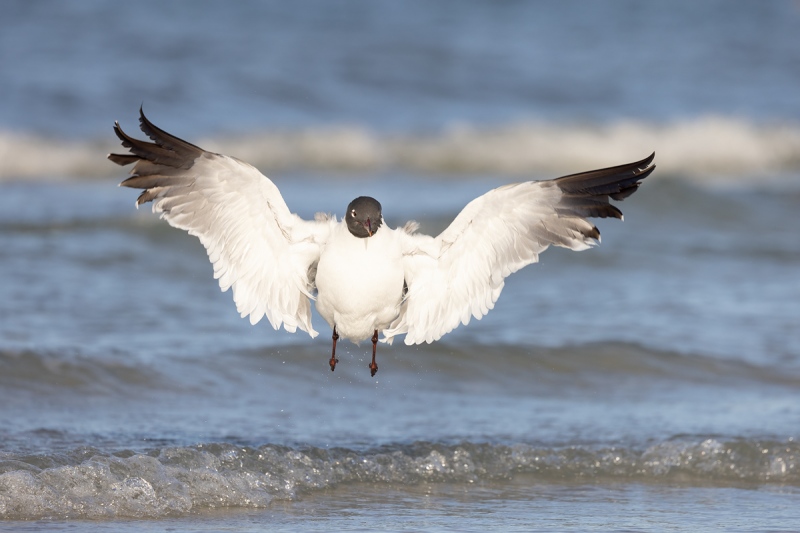What’s Up?
Stick Marsh continues to consistently provide some of the very best photographic opportunities I have ever come across in my almost 38 years of bird photography. I screwed up yesterday by switching back and forth from the 200-600 G lens to the 600 GM (with a TC) and back again. Eery time I switched, I wound up having the wrong rig in my hands. (What else is new???) Today I will put one of my a9 ii bodies on the 600 f/4 with the 1.4X TC and leave it on the grass beside me where I can grab it and hand hold when needed for head portraits.
Despite my misadventures, I wound up with 122 keepers after the first edit on Thursday. Wednesday was 146 keepers after the first edit. As I said, the action at Stick Marsh is phenomenal and unprecedented. On Thursday I tried some out of the box stuff and got some neat images — including the one featured in today’s blog post. What’s more amazing is that with the amazing AF capabilities of the latest mirrorless cameras this (relatively) old man has become a fairly proficient flight photographer (though I still struggle at times with getting the bird in the middle of the frame and keeping it there …) That said, with the last two edits I have deleted hundreds of sharp, perfectly exposed flight shots, images that I and others would have given their eye teeth for just a year ago …
Today is Friday 26 March 2021. I am meeting with BPN/Brian Sump-friend Vaughn Larsen for a morning of In-the-Field Instruction. Vaughn is visiting Florida from the Denver, CO area. The forecast for this morning is for partly cloudy skies with light winds from the south. That is a great forecast for bird photography; the more sun the better. Wherever you are and whatever you are doing, I hope that you have a great day.
This blog post took about an hour to prepare and makes ninety-four days in a row with a new one. Please remember to use my B&H affiliate links or to save money at Bedfords by using the BIRDSASART discount code at checkout. Doing either often earns you free guides or discounts. And doing so often earns my great appreciation.
DeSoto IPT Notes
You will see below that I have committed to both DeSoto IPTs with just a single registrant? Why? Because I value your time and interest. If you are arranging your schedule, taking time off from work, and planning your travel there is no way that I will disappoint you. Note: certain IPTs like Homer Bald Eagle IPTs and Galapagos Photo Cruises (both coming soon) do require a minimum number of sign-ups because of the huge up-front money that is required. DeSoto has been hot lately.
Stick Marsh In-the-Field Instruction
If you live in or will be visiting Florida in the next few weeks, consider joining me for a morning of In-the-Field Instruction at Stick Marsh. A three hour morning session is $300.00. You will enjoy spoonbill flight action beyond what you might have ever dreamed of. You can contact me via e-mail to discuss a schedule and the weather. Or, you can try me on my cell phone or message me at 1-863-221-2372. I will be running a Stick Marsh IPT next March.
The Stick Marsh Site Guide Subscription Service
The Site Guide Subscription Service is a new concept. I e-mailed the first issue yesterday to five smart folks: Stick Marsh Site Guide e-Mail #1: The Basics. I will be e-mailing the next installment tomorrow, Saturday 27 March. The Basics includes specific directions to the site, and a map of the rookery area with specific instructions and wind, weather, and where-to-be advice. There are lots of photographers at Stick Marsh most days. Many are skilled at hand-holding 500 and 600mm f/4 telephotos lenses. But with all due respect, none of them can come anywhere near me when it comes to analyzing the photo opps at a given location. With the exception of a very nice and very helpful man I met, Fred Vaughn, every single photographer got to their favorite spot and never moved. We moved around a lot and had great and different chances all day long. After most of my visits, you will receive an e-mail noting the best current locations and anything new that I’ve learned.
To sign up for the Stick Marsh Site Guide Subscription Service, call Jim in the office weekday afternoons at 863-692-0906 with your credit card in hand or send a PayPal for the $100.00 to us at birdsasart@verizon.net. Please be sure to include the words Stick Marsh with your Paypal. At some point, we will get this item in the BAA Online Store.
I fully understand that you can go to Google Maps, find the Stick Marsh, visit, and likely make some good or great images. You might think, I can do fine just without artie’s advice. But you will do a whole lot better with it.
As above, please contact me via e-mail to explore the possibilities of a morning In-the-Field Instructional Session or two at Stick Marsh.
|
|
|
This image was created on 25 March 2021 at Stick Marsh. I used the hand held Sony FE 200-600mm f/5.6-6.3 G OSS lens (at 400mm) and The One, the Sony Alpha 1 Mirrorless digital camera. ISO 800. Exposure determined with ISO on the Thumb Wheel. The exposure was shown to be less than 1/3 stop under by RawDigger: 1/3200 sec. at f/6.3 (wide open) in Manual mode. AWB at 9:05am on partly sunny morning. Wide/AF-C was active at the moment of exposure and performed perfectly. Click on the image to enjoy a larger version. Image #1 and Only: Roseate Spoonbill leaving with stick for nest |
Five Million to One Shot Comes Home! Or not?
Spoonbills were flying in one after another. They search around for a minute or two for the “best” stick — lord knows how they know which is the best stick — and then they take flight and head back to the rookery a bit more than one hundred yards distant. Every time a bird departs every photographer holds down the shutter button in hopes of getting a single good one in what is a very difficult situation at best. Why? The birds are flying away from us and even the AF system of the SONY a1 had trouble tracking the eye. Especially when there is not an eye in sight as with today’s featured image.
The sound of the shutters going off is almost as deafening as the airboats. Except for the shutters of the R5 shooters that are unfortunately silent. When the 20th bird took off to a crescendo of shutter releases, I called out, “These are one in five million chances.” Everyone laughed out loud.
I absolutely love today’s featured image. What do I like? The full downstroke wing position, the subtle gradation of the still-blue-water background, the great look at the incredible copper-orange tail feathers and the rich, carmine rump. And the stick!
One thing bugs me. If you think you know what it is, please leave a comment.
Does this image work for you? Why or why not?
Sony Alpha a1 Astounds
To learn exactly how I set up my Alpha a1 for flight photography to achieve results like those seen in Image #1, above, join the SONY Alpha a1 Set-up and Info Group.
SONY Alpha a1 Set-up and Info Group
With 18 members already, the SONY Alpha a1 Set-up and Info Group is going great guns as folks chime in with thoughtful questions and experience-based answers. I learned a ton recently in group e-mail exchanges with Geoff Newhouse, Craig Elson and James Spillman. Like the R5, the a1 is an incredibly complex camera body. But the sad news is that if you are doing bird photography right now, the Alpha a1 pretty much obliterates the competition with 51,000,000 gorgeous pixels and a science-fiction-like AF system … Right now the group is dealing with a fairly serious problem with the a1. We have made SONY aware of the problem and are hoping for a resolution soon.
All who purchased their Alpha a1 bodies via a BAA affiliate link receive a free subscription to the Sony Alpha a1 Set-Up and Info group. This same service may be purchased by anyone with an a1 body via a $150.00 Paypal sent to birdsasart@verizon.net indicating payment for Alpha a1 Info Updates. Or, you can call Jim in the office weekday afternoons at 863-692-0906 with your credit card in hand. New members will receive a composite e-mails that will bring them 100% up to date with where we are with this great new camera body.
|
|
|
All of the images were created at Fort DeSoto in April or early May. Click on the card to enjoy a larger version. Fort DeSotoIPT card A |
Fort DeSoto Spring IPT #1
Fort DeSoto Spring IPT #1. 3 1/2 DAYS. SAT 10 APR thru the morning session on TUES 13 APR 2021. $1499 includes three lunches. Limit: 6. Openings: 5.
While DeSoto is one of the rare photo hotspots with the potential to be great any day of the year, it absolutely shines in spring. Many of the wading birds and shorebirds are in full breeding plumage. The terns and gulls are courting and copulating. We will have lots of flight photography opportunities. Did I mention that many of the birds are silly tame?
A $499 deposit is required to hold your spot for this IPT. You can send a check (made out to “BIRDS AS ART) to us here: BIRDS AS ART, PO Box 7245, Indian Lake Estates, FL, 33855, or call Jim or Jennifer at the office with a credit card at 863-692-0906. Your balance, payable only by check, is due immediately after you sign up. If you have any questions, please feel free to contact me via e-mail. If you cancel due to COVID 19 concerns, all of your payments will be refunded.
|
|
|
All of the images were created at Fort DeSoto in April or early May. Click on the card to enjoy a larger version. Fort DeSoto IPT card B |
Fort DeSoto Spring IPT #2
Fort DeSoto Spring IPT #2. 3 1/2 DAYS. MON 26 APR thru the morning session on THURS 29 APR 2021. $1499 includes three lunches. Limit: 6. Openings: 5.
Not only am I conversant in all three major camera systems used in the US — Nikon, Canon, and SONY (sorry Andy Rouse …), I have used all three within the past four years. Those include both SONY and Canon mirrorless. On both of these IPTs you will learn how to get the best exposure, how to get the most out of your AF system, and how to get close to free and wild birds. And tons more.
A $499 deposit is required to hold your spot for this IPT. You can send a check (made out to “BIRDS AS ART) to us here: BIRDS AS ART, PO Box 7245, Indian Lake Estates, FL, 33855, or call Jim or Jennifer at the office with a credit card at 863-692-0906. Your balance, payable only by check, is due immediately after you sign up. If you have any questions, please feel free to contact me via e-mail. If you cancel due to COVID 19 concerns, all of your payments will be refunded.
|
|
|
All of the images were created at Fort DeSoto in April or early May. Click on the card to enjoy a larger version. Fort DeSoto IPT card C |
Fort DeSoto Spring IPTs Expected Species
With any luck, we should get to photograph the following species: Laughing, Ring-billed, Herring, and Lesser Black-backed Gull; Royal, Sandwich, and Forster’s Tern: Great, Snowy, and white and dark morph Reddish Egret and Great Blue, Little Blue, and Tricolored Heron; Yellow-crowned Night-Heron, Wood Stork, Roseate Spoonbill, and Brown Pelican. We will see and photograph lots of shorebirds including American Oystercatcher, Black-bellied, Wilson’s, Semipalmated, Snowy, and Piping Plover, Marbled Godwit, Willet, Dunlin, Red Knot, Sanderling, and Western and possibly White-rumped Sandpiper.
Sign up for both IPTs and enjoy a $200 discount. Most of us will be staying in nearby Gulfport.
Typos
With all blog posts, feel free to e-mail or to leave a comment regarding any typos or errors.

